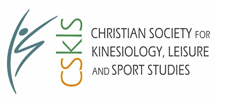Location
Solheim 104
Start Date
8-6-2024 9:30 AM
End Date
8-6-2024 10:15 AM
Description
INTRODUCTION: The ability of the hands to grasp and manipulate is fundamental in the performance of activities of daily living (ADL)1. ADL refers to those elementary tasks that allow a person to function with autonomy and independence. For ADL’s to be accomplished innervation, strength, and range of motion (ROM) are necessary to complete tasks such as opening a water bottle, gripping a coffee mug, inserting a key into a door lock, or simply getting dressed.
PURPOSE: The purpose of this study was to measure the relationship between hand strength, pinch strength, forearm strength and ROM in various anatomical positions commonly associated with ADL’s.
METHODS: This study was a correlational study. Subjects included faculty, staff, and students at a small private college (n = 42, age = 29.8 ± 14.5). Upon completion of the informed consent subjects completed demographic data. Then, a 5-minute warm up was conducted. Proceeding the warmup, ROM and manual muscle testing on the left and right side was completed for wrist flexion, wrist extension, radial deviation, ulnar deviation, supination, and pronation. The left and right side were also tested for hand grip strength and pinch strength. Pearson correlation was used, and significance was assessed at 0.05.
RESULTS: The results of this study produced numerous significant correlations*. There were significant positive correlations between hand grip strength, pinch strength, and manual muscle testing in various anatomical positions (p
CONCLUSION: Understanding the relationship between strength and ROM may provide practitioners, such as occupational therapists, a better understanding of treatment options that can be incorporated into therapy to improve functional independence in ADL’s.
* Given the brevity of the abstract, broad statements will be used to describe the results, and details will be provided during the presentation if the abstract is accepted.
Recommended Citation
Carter, Cali; Spindler, Lindsay; and Ruot, Chuck, "The Relationship Between Hand Grip Strength, Pinch Strength, Forearm Strength, and Range of Motion in Various Anatomical Positions" (2024). CSKLS Annual Conference. 9.
https://digitalcollections.lipscomb.edu/cskls-conference/2024/Wednesday/9
Included in
The Relationship Between Hand Grip Strength, Pinch Strength, Forearm Strength, and Range of Motion in Various Anatomical Positions
Solheim 104
INTRODUCTION: The ability of the hands to grasp and manipulate is fundamental in the performance of activities of daily living (ADL)1. ADL refers to those elementary tasks that allow a person to function with autonomy and independence. For ADL’s to be accomplished innervation, strength, and range of motion (ROM) are necessary to complete tasks such as opening a water bottle, gripping a coffee mug, inserting a key into a door lock, or simply getting dressed.
PURPOSE: The purpose of this study was to measure the relationship between hand strength, pinch strength, forearm strength and ROM in various anatomical positions commonly associated with ADL’s.
METHODS: This study was a correlational study. Subjects included faculty, staff, and students at a small private college (n = 42, age = 29.8 ± 14.5). Upon completion of the informed consent subjects completed demographic data. Then, a 5-minute warm up was conducted. Proceeding the warmup, ROM and manual muscle testing on the left and right side was completed for wrist flexion, wrist extension, radial deviation, ulnar deviation, supination, and pronation. The left and right side were also tested for hand grip strength and pinch strength. Pearson correlation was used, and significance was assessed at 0.05.
RESULTS: The results of this study produced numerous significant correlations*. There were significant positive correlations between hand grip strength, pinch strength, and manual muscle testing in various anatomical positions (p
CONCLUSION: Understanding the relationship between strength and ROM may provide practitioners, such as occupational therapists, a better understanding of treatment options that can be incorporated into therapy to improve functional independence in ADL’s.
* Given the brevity of the abstract, broad statements will be used to describe the results, and details will be provided during the presentation if the abstract is accepted.



Christian Perspective of Presentation
1. Learning how intricate the body is and how each individual functions in daily life to best serve the Lord. “We have many parts in the one body, and all these parts have different functions. In the same way, though we are many, we are one body in union with Christ, and we are all joined to each other as different parts of one body.” Matthew 25:40
2. Gaining knowledge for my future field, so I can therefore refresh others with healing and the spirit. “A generous person will prosper; whoever refreshes others will be refreshed.” Proverbs 11:25